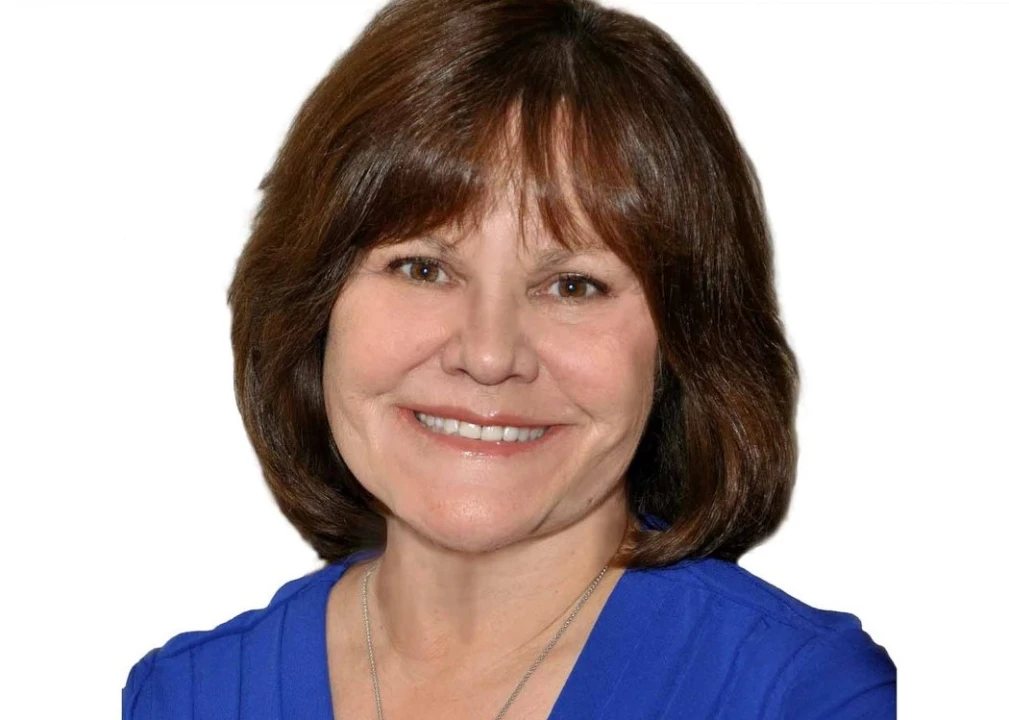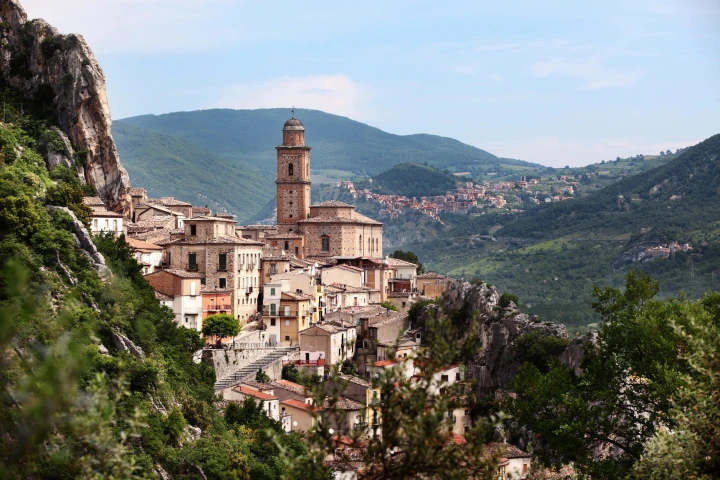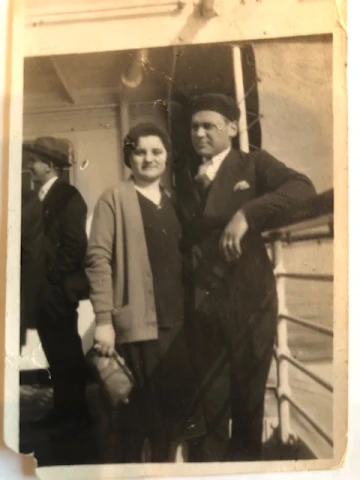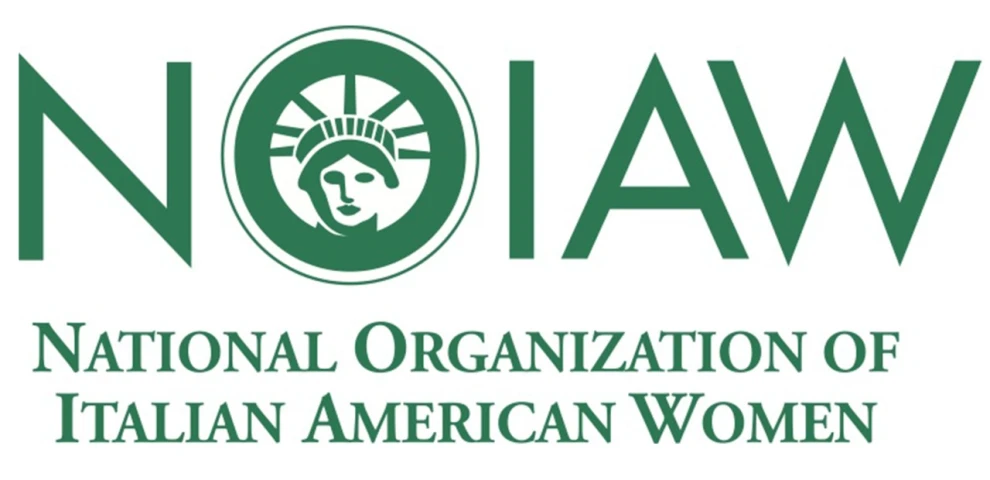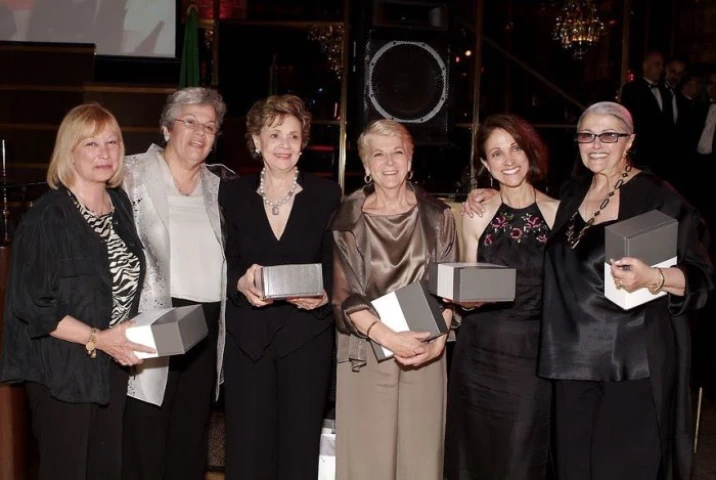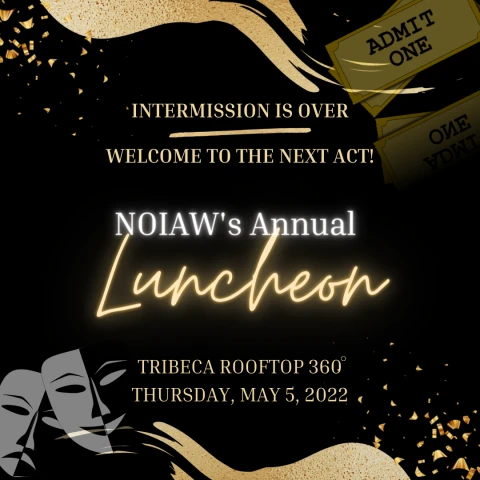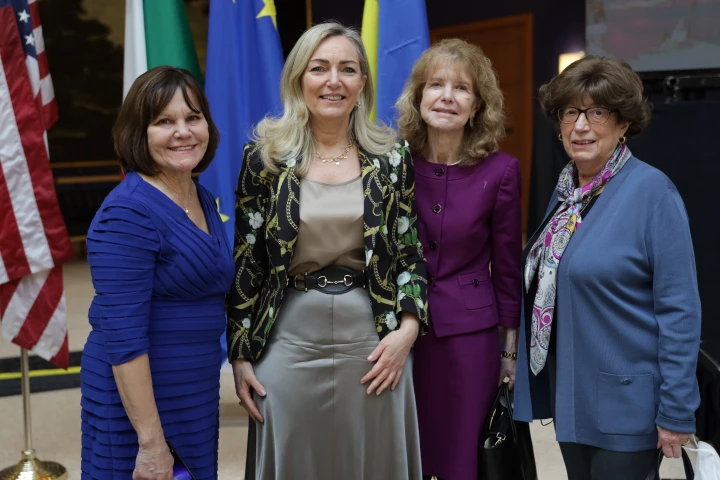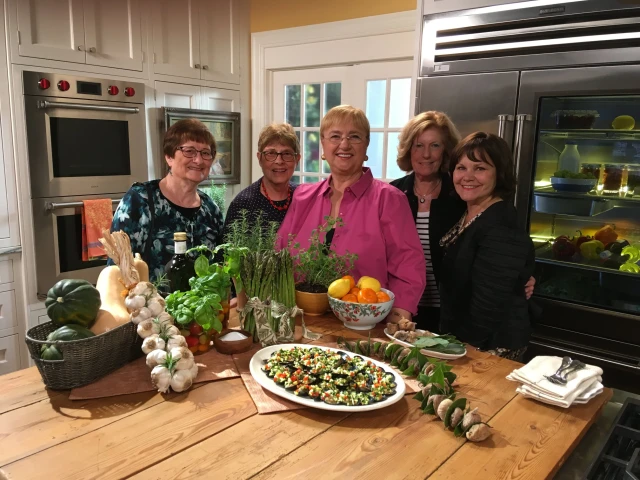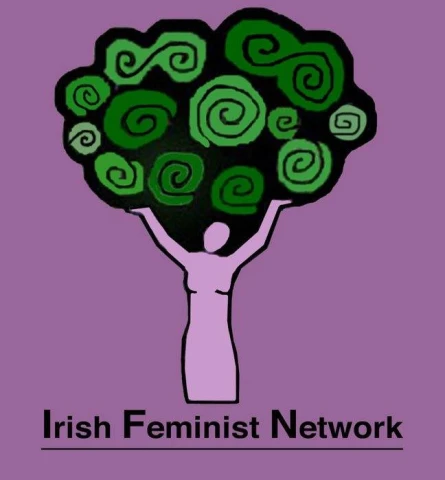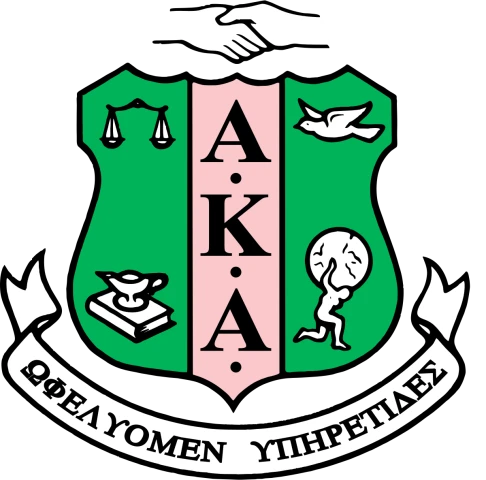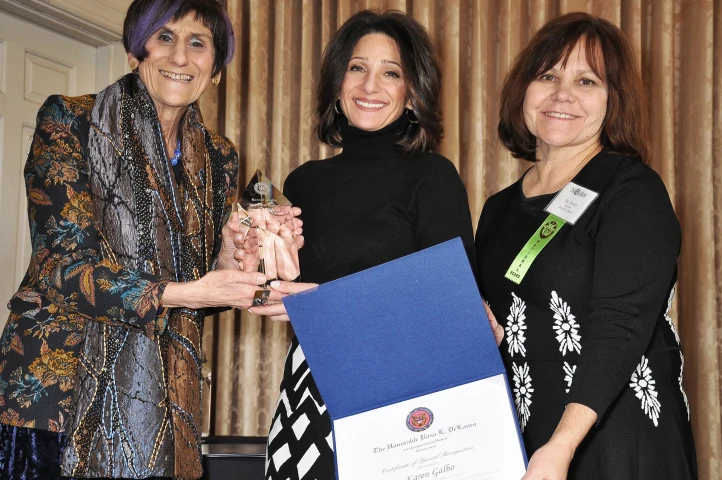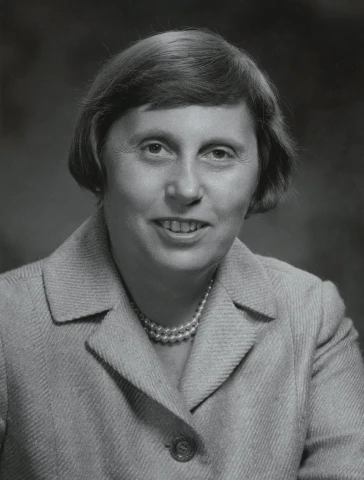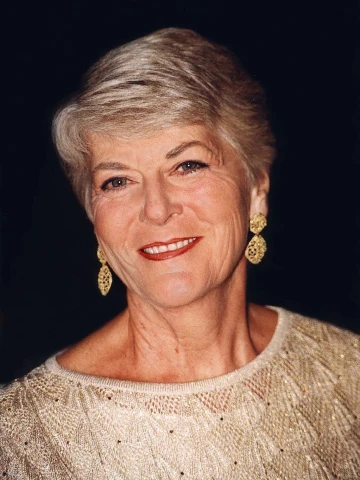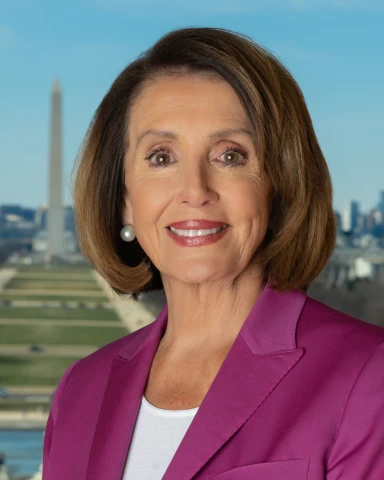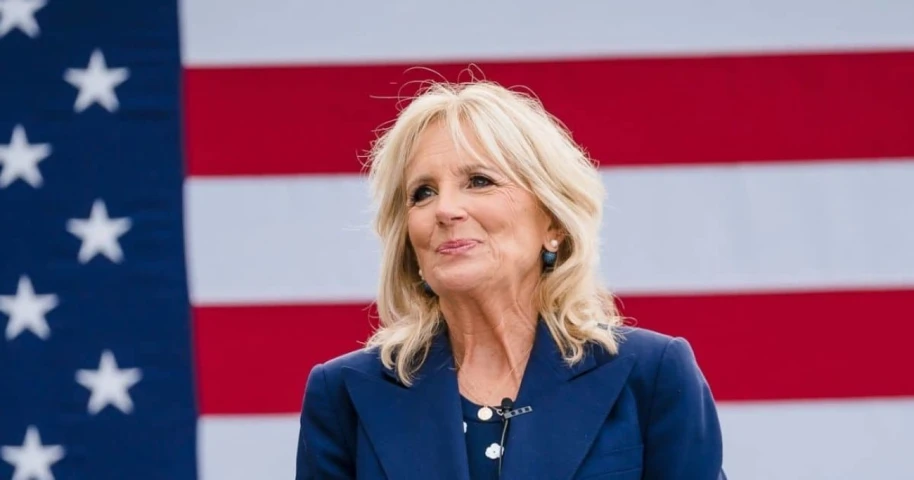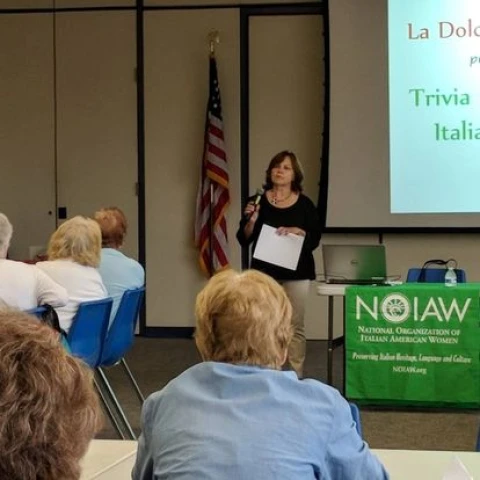If it is true - as it is - that Italian Americans have a lot of Italian culture in their DNA, one of the most obvious proofs is the role of women in the family. Both in Italy and in the Italian American community, women are the fundamental pillar of the family, but they are also very much more. Time’s passing and society’s evolving lead to a due, though still too slow and partial, recognition of this.
Thus, in the narrative of the Italian American community's past there is a huge imbalance in favor of the stories of men and their remarkable contributions, which would have been impossible without Italian American women. The present is a little better but it is still far too little, and if the future is going to be better, we will owe it in part to the role of the National Organization of Italian American Women (NOIAW). The protagonist of this interview is Pat Tinto, the President of NOIAW: we thank her and in doing so we also thank all Italian and Italian American women, without whom we men would be able to do much, but much less than we do.
Welcome to We the Italians, Pat. Please tell us something about yourself and your Italian American heritage.
I was the youngest of five children of Italian immigrants. My parents were both from a small town in Abruzzo: Villa Santa Maria, in the Val di Sangro in the province of Chieti, also known as “Paese dei Cuochi” (the town of chefs).
Their names were Vera Italia Maiocco and Vincenzo Tinto. My mom always said that her father was a very proud patriot of Italy and had been a prisoner of war, detained in an Austrian camp during WW I, where he was forced to cook for the Austrian command. That’s why he named her Vera Italia, or true Italy.
My father, whose parents had died when he was young, came to America with an older cousin in the 1920s. On a trip back to the Villa Santa Maria in 1929, he became engaged to my mother. He returned to New York for 18 months and then went back to Italy to marry my mother on January 10, 1931, in the town’s church. They sailed for America from Naples and quickly had to establish themselves in what was then the Little Italy of New York City. They lived on the top of a fourth-floor walk-up where you had to bring your fuel for the winter up four flights of stairs. My mother taught herself to read, speak and write some English by listening to the radio.
Although my mother had many first cousins in her new country, she had no immediate family nearby, as her mother and father and younger twin siblings remained behind. So as a young bride of 17, she had to find her way in the new world on her own. My father went to work in local Italian restaurants, and they had a typical immigrant life working very hard, long days. Eleven months after they were married, my mom gave birth to a son and then went on to have three more children in the next six years.
I came along many years later and was the bonus baby after they have been married for 23 years, When they first came here, my parents’ goal, like many of the immigrants in the early part of the 20th century, was to Americanize, to absorb and to assimilate the culture in New York and to learn how to be an American. As a result, the emphasis for my three brothers and one sister while growing up was to speak English, go to school to achieve and succeed for the next generation: do better than they did. My siblings didn’t learn to speak Italian, but they could understand it because my parents spoke to one another in Italian. But when I was born years later, I was very intrigued by this entire family culture and the language my parents spoke. Plus, sometimes on Sundays and holidays we would go to other cousins’ houses and all my relatives and family spoke Italian, and I wanted to be able to understand and communicate.
I made a point of studying Italian in school and later took a summer semester abroad at Università per Stranieri, in Perugia, to immerse myself in the language.
My family lived in Brooklyn in a typical ethnic blue-collar neighborhood, where women mainly stayed home or worked at local dress factories while men went to the “city,” or Manhattan, for work. There were no women role models who were going on to college or having their own careers. It was a bit transformational for me, being the first woman in my family to attend college straight from high school. My oldest brother had enlisted in the army and eventually studied at night to become an engineer, but I was the first woman to go to college, and it really opened up a whole new world for me. I learned that it was okay for women to be independent and strike out on their own, which, prior to the 1980s, was almost a foreign concept, especially for Italian American women.
You are the president of the National Organization of Italian American Women. For our readers who know little about this vital organization, how and when was NOIAW born?
In 1980 there were many organizations for different ethnic groups, but all of them were dominated mainly by men. There were several Italian American organizations where the men made the speeches and the women made the coffee and they really didn’t have a voice or a seat at the table other than the one in the dining room.
In those years in New York, Geraldine Ferraro was a congresswoman from Queens who later went on to be the first woman to run for Vice President of the United States on a major party ticket. When she was asked by Dr. Aileen Riotto Sirey, “Are there any organizations for women of Italian American descent?” Geraldine Ferraro answered no, and she added, “Why don’t you start one?
And so Aileen did. She assembled a group of women who were among the firsts in many ways and rising stars in the Italian American community. There was former First Lady of New York State, Matilda Raffa Cuomo; Donna de Matteo, who became an actress and theatre professional; Roseanne Coletti, a TV news broadcaster, and several lawyers, judges and educators.
They decided they were going to create a national network to support the educational and professional aspirations of its members and also to combat ethnic stereotypes to show that a woman’s place was not just in the kitchen. There was a popular saying at that time amongst different women’s groups that “A woman’s place is not only in the House, but also in the Senate.”
NOIAW’s mission was to inspire, empower and connect women of Italian descent through their common heritage and to help the next generation understand that it wasn’t always easy for women to forge a path outside the home. As the generations get further away from the immigrant experience and the original family traditions, NOIAW would be there to help them along the way and show them how to preserve their heritage and culture at the same time.
We are coming off of two very difficult years of Covid. With the hope that we can get back to organizing activities like we used to, what's in the present and future of NOIAW?
Our organization encompasses four physical regions. The first is the New York area, which includes all five boroughs, Westchester, Long Island, and some parts of upstate. The second is the Washington D.C. area, which also includes Virginia and Maryland. The third is Rhode Island, and the fourth is Connecticut.
These areas would produce programming based on museum tours, to connect to an Italian exhibit or current events in Italy, or authors and prominent women in the law or in government who would come and speak to the group. As I said earlier, our mission is to inspire and empower and to connect women to networking and support groups.
During Covid my colleagues and I asked ourselves how to connect to other women without meeting in person. Once Covid hit hard, we had to shut down all these programs, but we didn’t want to lose the ability to connect, so we started using technology to do video meetings to communicate. We were able to create programs that appealed to women not only across the United States but in Italy too.
Now that we are trying to get back to in-person programs, we’ve had a few glitches here and there. So we are still using technology to virtually see more people but are starting to travel a bit to reach more Italian American women across the country and meet them in person.
We will have a very important event on May 5 in New York, our annual luncheon. NOIAW will honor three dynamic women: Patti LuPone (Tony, Olivier and Grammy Award Winning Actress and Singer); Gina Argento (President and CEO of Broadway Stages, Ltd); and Angelina Fiordellisi (Executive Director of Cherry Lane Theatre & Co-founder of Cherry Lane mentor project).
Is there a possibility of seeing more NOIAW chapters in other parts of the United States?
That’s one of my goals in my new role as President: to help expand the leadership in other regions. Maria Tamburri has done an incredible job in the past years as Chair of the organization, but she has so many administrative functions, including overseeing our finances and running the office day-to-day, that we need another person to support programming and outreach. So, that’s part of my goal right now.
We do have members from all over the country; unfortunately, we haven’t been able before now to establish a physical presence, but we have learned that we don’t have to: one of us doesn’t have to physically be there to conduct a meeting now. But we are searching for leadership in the various regions so that they can meet too and connect on their own.
Are there other organizations in America similar to yours, i.e. dedicated to the female universe, within other American ethnic groups? Maybe an association dedicated to Irish American women, or Jewish American women?
Yes, there are. The first that comes to my mind is the Jewish Community of Hadassah, which for years has been a service-oriented international organization. My late mother-in-law was a secretary to the Hadassah president, so I know they did worldwide conferences, but they served on a local level like we do. There is also Women’s ORT, which is the organization for rehabilitation and training which started in Russia among Russian female Jews, helping them to acquire skills and start careers, and it continues to be funded as an American branch here.
Also, I know about two Irish organizations: the Irish Feminist Network and the National Women’s Council of Ireland. And then there are many Black women’s organizations and sororities which Vice President Kamala Harris cited in her speech at the Democratic Convention. I think hers was Alpha Kappa Alpha.
The history of the Italian American community is more concentrated on men than women. Yet the Italian American women have played a fundamental role in every Italian American’s life. Today things are changing, but we ask you to tell our readers about the enormous importance of Italian American women over the decades, from the years of mass emigration to today.
If you look at it, it’s the women – no disrespect to any men – who really are the keepers of the culture and of the family and of the stories that get passed on. Whether it’s a story about who your grandparents were or the story of how they came to this country or how they succeeded in becoming American citizens. They have all those stories embedded in them.
When we talk about this now in the organization, about what unites us all, we understand that what makes us Italian American women special is that we share the same values: family, food and faith, not necessarily in that order. But who are the family? I mean, it’s the mother who provides nourishment from when you are born and nourishes your soul and teaches you the beliefs and what family means. We always put family first, but we also see our community as a family. And then there’s our faith, together with our traditions. And once again it all comes from mainly the mother. Think about the words that we use, or the analogies in our history: we refer to the Earth as Mother Earth because that’s also where we gain our nourishment and our soul. And why Italians value the land so much.
There is a new documentary coming out called "Heirloom" produced by another NOIAW member, which focuses on the connection between Italians and their gardens. Somehow the Italians feel that those roots that bind us all start with us in our home, in our garden. Basically all come from the mother or the woman figure. The man is important, busy being the traditional provider, but women provide sustenance and they provide guidance. For Italian American women there are many role models who were able to take what they learned about how to run a family and transfer that to their jobs. They shared their values just as they taught their children to treat each other with respect.
And so we at NOIAW learn from all these women who learned from their mothers and their families how we have to act and interact. In the Italian families, women always had that leadership power, and it’s now time to be recognized all over the country.
Is there an Italian American woman known by everyone who can be pointed to as a role model of yours? And instead, staying in the intimacy of your family or your friendships, is there an Italian American woman who has inspired you and who represents an important point of reference for you?
It’s hard to pick just one. One woman I have always admired is Rosa DeLauro from Connecticut, who is a real leader and has been fighting for family values: she was just very instrumental in passing the Family Child Credit. She comes from a very large family, and her mother was a councilwoman in Connecticut. Rosa is now Chair of the Appropriations Committee in the United States House: it’s the most powerful committee in Congress. Every year she comes to our celebration where we honor three wise women, and Rosa makes sure she has the time to come. She often talks about what she learned at the hands of her mom and she can do it all – she now is a grandmother going back and forth to Washington but she always makes time to come back for her family.
And then, of course, close to home and to my heart it’s always my mother who maybe, while growing up, I didn’t quite appreciate as much as she deserved. I was almost like an only child, because I was born so much later in life for her. But she had the bravery to leave her family at the age of 16 and make it in a new world. My parents were here in the early 20th century, and I don’t know if I could have done that, tackle a foreign language and raise four children on my own. While my father worked six days a week in a restaurant, she taught herself to cook and then she also started to work. She started as a seamstress because she felt she had to contribute more, and she was able to do all these things and she very rarely complained, but she really had a hard life. She did it all for her family and her children, and I try to always remember that, and I am so happy that she came to live with us in the last years of her life, so my kids got to understand what family meant to her and to appreciate her history.
Italian American women have set at least three important records in politics: Ella T. Grasso was the first woman elected Governor of an American state, Connecticut; Geraldine Ferraro was the first woman candidate in a presidential ticket of one of the two big American parties; Nancy Pelosi was the first woman President of the House. Do you think we will ever see an Italian American woman President of the United States?
Our organization has been working for a while to try to help women move to the next level. Perhaps, without the cracks in the glass ceiling that those three fantastic women made over the last four decades, there would not have been room right now for the first Italian American to live in that White House, Jill Giacoppo Biden, the First Lady. She is still teaching and epitomizes what Italian women are all about.
So, we are making progress, and I think we soon will see a woman leading the White House. I don’t know if she will be an Italian American, but we certainly have a lot of role models out there to help us to get to the next level. And I just think that bringing that sense, capturing the values of Italian American families, will be inherited in any next President. I mean, look at Germany, which now has three women leading their Defense Team in their Government. The world is starting to wake up. More people listen to a message that comes from a woman, maybe because they can relate back to their mothers influence.
Se è vero - come è vero - che gli italoamericani hanno molto della cultura italiana nel loro dna, una delle prove più evidenti è il ruolo della donna nella famiglia. Sia in Italia che nella comunità italoamericana le donne sono la colonna fondamentale della famiglia: ma sono anche molto di più. Il tempo che passa e la società che evolve portano ad un dovuto, sebbene ancora troppo lento e parziale, riconoscimento di tutto ciò.
Così, nella narrazione del passato della comunità italoamericana c’è un enorme disequilibrio a favore delle storie degli uomini e dei loro notevoli contributi, che sarebbero stati impossibili senza le donne italoamericane. Il presente è un po’ meglio ma è ancora davvero troppo poco, e se il futuro sarà migliore lo dovremo anche al ruolo della National Organization of Italian American Women (NOIAW). La protagonista di questa intervista è Pat Tinto, la Presidente di NOIAW: la ringraziamo e nel farlo ringraziamo anche tutte le donne italiane e italoamericane, senza le quali noi uomini riusciremmo a fare molto, ma molto meno di quanto facciamo.
Benvenuta su We the Italians, Pat. Raccontaci qualcosa di te e delle tue origini italoamericane
Sono la più giovane di cinque figli di immigrati italiani. I miei genitori erano entrambi di un piccolo paese dell'Abruzzo: Villa Santa Maria, nella Val di Sangro in provincia di Chieti, conosciuta anche come "Paese dei Cuochi".
I loro nomi erano Vera Italia Maiocco e Vincenzo Tinto. Mia madre diceva sempre che suo padre era un patriota molto orgoglioso dell'Italia ed era stato prigioniero di guerra, detenuto in un campo austriaco durante la prima guerra mondiale, dove fu costretto a cucinare per il comando austriaco. Ecco perché chiamò sua figlia Vera Italia.
Mio padre, i cui genitori erano morti quando era giovane, venne in America con un cugino più grande negli anni venti. Durante un viaggio di ritorno a Villa Santa Maria nel 1929, si fidanzò con mia madre. Tornò a New York per 18 mesi e poi tornò in Italia per sposare mia madre il 10 gennaio 1931 nella chiesa del paese. Salparono per l'America da Napoli e si stabilirono rapidamente in quella che era allora la Little Italy di New York City. Vivevano in cima ad un quarto piano senza ascensore, dove si doveva portare il carburante per l'inverno su per quattro rampe di scale. Mia madre imparò a leggere, parlare e scrivere in inglese ascoltando la radio.
Anche se mia madre aveva molti cugini di primo grado nel suo nuovo paese, non aveva una famiglia nelle immediate vicinanze, poiché sua madre, suo padre e i suoi fratelli gemelli più piccoli erano rimasti in Italia. Così, da giovane sposa di 17 anni, dovette trovare la sua strada nel nuovo mondo da sola. Mio padre andò a lavorare nei ristoranti italiani della zona, e la loro era una tipica vita da immigrati: lavoravano molto duramente e per lunghe giornate. Undici mesi dopo il loro matrimonio, mia madre diede alla luce un figlio e poi continuò ad avere altri tre figli nei primi sei anni del loro matrimonio e della loro vita a New York. Io arrivai molti anni dopo e fui l’ultima sorpresa dei loro primi 23 anni di matrimonio.
Quando arrivarono qui, il loro obiettivo, come molti degli immigrati all'inizio del XX secolo, era quello di americanizzarsi, di assorbire e assimilare la cultura di New York e di imparare ad essere americani. Di conseguenza, per i miei tre fratelli e una sorella mentre crescevano i miei genitori vollero che imparassero a parlare inglese, ad andare a scuola per raggiungere e avere successo per le generazioni future: di fare meglio di loro. I miei fratelli non impararono a parlare italiano, ma potevano capirlo perché i miei genitori lo parlavano tra di loro. Ma quando sono nata io, anni dopo, ero molto incuriosita da tutta questa cultura familiare e dalla lingua che parlavano i miei genitori. Inoltre, a volte la domenica e durante i giorni di festa andavamo a casa di altri cugini e tutti i miei parenti e familiari parlavano italiano, e io volevo essere in grado di capire e comunicare.
Mi sono imposta di studiare l'italiano a scuola e poi ho fatto un semestre estivo all'estero all'Università per Stranieri, a Perugia, per immergermi nella conversazione in lingua italiana.
Mentre stavo crescendo, vivevamo a Brooklyn in un tipico quartiere etnico e popolare, dove le donne stavano principalmente a casa o lavoravano nelle fabbriche di vestiti locali, mentre gli uomini andavano in "città" o a Manhattan per lavoro. Non c'erano modelli di riferimento femminili che andassero al college o che avessero una propria carriera. E' stato un po' un cambiamento per me essere la prima donna della mia famiglia a frequentare l'università direttamente dal liceo. Mio fratello maggiore si era arruolato nell'esercito e alla fine ha studiato di notte per diventare ingegnere, ma io sono stata la prima donna ad andare al college e questo mi ha davvero aperto un mondo completamente nuovo su come fosse giusto per le donne essere indipendenti e mettersi in proprio, che prima degli anni '80 era quasi un concetto sconosciuto, specialmente per le donne italoamericane.
Sei la presidente della National Organization of Italian American Women. Per i nostri lettori che sanno poco di questa importante organizzazione, come e quando è nata la NOIAW?
Nel 1980 c'erano molte organizzazioni per diversi gruppi etnici, ma tutte erano principalmente dominate da uomini. C'erano diverse organizzazioni italoamericane dove gli uomini faceva i discorsi e le donne facevano il caffè e non avevano davvero una voce o un posto a tavola che non fosse quello della sala da pranzo.
In quegli anni a New York Geraldine Ferraro era una deputata del Queens che in seguito fu la prima donna a candidarsi come vicepresidente degli Stati Uniti in un ticket presidenziale di uno dei maggiori partiti. Quando le fu chiesto dalla dottoressa Aileen Riotto Sirey: "Ci sono organizzazioni per donne di origine italoamericana?” Geraldine Ferraro rispose di no, e aggiunse: "Perché non ne crei una?".
Aileen mise insieme un gruppo di donne che erano tra le prime in molti modi e stelle nascenti nella comunità italoamericana. C'era l'ex First Lady dello Stato di New York, Matilda Raffa Cuomo; Donna de Matteo che divenne un'attrice e una professionista del teatro; Roseanne Coletti, una conduttrice televisiva; e diversi avvocati, giudici ed insegnanti.
Decisero che avrebbero creato una rete nazionale per sostenere le aspirazioni educative e professionali delle sue iscritte e anche per combattere gli stereotipi etnici, per dimostrare che il posto di una donna non era solo in cucina. C'era un detto popolare a quel tempo tra diversi gruppi di donne che diceva: "Il posto di una donna non è solo alla House (ndr in America House è la casa, ma anche la Camera dei Deputati), ma anche al Senato".
La mission di NOIAW era di ispirare, sostenere e connettere le donne italiane attraverso la loro comune eredità culturale e di aiutare la prossima generazione a capire che non è sempre stato facile per le donne forgiare il loro percorso fuori casa. Man mano che le generazioni di donne si allontanavano dall'esperienza della prima emigrazione e dalle tradizioni familiari originali, NOIAW sarebbe stata lì per aiutarle lungo la strada e allo stesso tempo mostrare loro come preservare la loro eredità e cultura.
Stiamo uscendo da due anni molto difficili di covid. Con la speranza di poter tornare ad organizzare attività come una volta, cosa c'è nel presente e nel futuro di NOIAW?
La nostra organizzazione comprende quattro regioni fisiche. La prima è l'area di New York, che comprende tutti e cinque i distretti, Westchester, Long Island e alcune zone del nord. La seconda è l'area di Washington D.C., che comprende anche la Virginia e il Maryland. La terza è il Rhode Island e la quarta è il Connecticut. Queste aree producono una programmazione basata su visite ai musei, per collegarsi a una mostra italiana o agli eventi attuali in Italia, o su autori e donne di spicco nella legge o nel governo che vengono a parlare. Come ho detto prima, la nostra missione è quella di ispirare e potenziare le donne e di metterle in contatto con gruppi di networking e di supporto.
Durante l’emergenza covid ci siamo chieste come connetterci ad altre donne senza incontrarci di persona. Quando le cose sono diventate molto complicate, abbiamo dovuto chiudere tutti i nostri programmi, ma non volevamo perdere la capacità di connetterci e abbiamo iniziato a usare la tecnologia per fare video incontri per comunicare. Siamo stati in grado di creare programmi che si rivolgevano non solo a tutto il Paese ma anche in Italia.
Ora stiamo cercando di tornare agli eventi in persona, abbiamo avuto qualche intoppo qua e là. Così ora stiamo combinando l'uso della tecnologia per vedere virtualmente più persone ma c’è la volontà di tornare in presenza e anche di viaggiare un po', per raggiungere più donne italoamericane in tutto il Paese e incontrarle di persona.
Avremo un evento molto importante il 5 maggio a New York, il nostro pranzo annuale. NOIAW onorerà tre donne molto dinamiche: Patti LuPone (attrice e cantante vincitrice di Tony, Olivier e Grammy Award); Gina Argento (Presidente e CEO di Broadway Stages, Ltd); Angelina Fiordellisi (direttore esecutivo del Cherry Lane Theatre e co-fondatrice del Cherry Lane mentor project).
C'è la possibilità di vedere più chapters NOIAW in altre parti degli Stati Uniti?
Questo è uno dei miei obiettivi, ora che hanno istituito questo ruolo di presidente, che aiuta ad espandere la leadership. Maria Tamburri ha fatto un lavoro incredibile negli ultimi anni come chairman dell'organizzazione ma ha così tante funzioni che comprendono l'amministrazione quotidiana dell'ufficio e la parte finanziaria così come le attività del consiglio di amministrazione, che abbiamo bisogno di un'altra persona per sostenere la programmazione e la diffusione. Quindi, spero che questo possa essere parte del mio obiettivo da oggi in avanti.
Abbiamo iscritte da tutto il paese; sfortunatamente, non siamo state in grado prima d'ora di raggiungere una programmazione diretta o una presenza fisica, ma ora abbiamo imparato che non c’è bisogno che ci sia una di noi fisicamente presente per condurre una riunione. Tuttavia, stiamo cercando una leadership nelle varie regioni in modo che anche loro possano incontrarsi e connettersi per conto loro.
Ci sono altre organizzazioni in America simili alla vostra, cioè dedicate all'universo femminile, all'interno di altri gruppi etnici americani? Magari un'associazione dedicata alle donne irlandesi americane, o alle donne ebree americane?
Sì, ce ne sono. La prima che mi viene in mente è la comunità ebraica di Hadassah che per anni è stata un'organizzazione internazionale di servizio. La mia defunta suocera era segretaria nella presidenza di Hadassah, quindi so che facevano conferenze mondiali, ma operava anche a livello locale come facciamo noi. C'è anche Women's Ort, che è l'organizzazione per il recupero e l'addestramento che è iniziata in Russia tra le donne ebree russe, aiutandole ad avere successo nella loro carriera, e ha continuato ad essere finanziata come un ramo americano qui.
Inoltre, so di due organizzazioni irlandesi: l'Irish Feminist Network e il National Women's Council of Ireland. E poi ci sono anche molte organizzazioni di donne afroamericane e sororities che la vicepresidente Kamala Harris ha citato nel suo discorso alla convention democratica. Credo che la sua fosse Alpha Kappa Alpha.
La storia della comunità italoamericana è più concentrata sugli uomini che sulle donne. Eppure le donne italoamericane hanno avuto un ruolo fondamentale nella vita di ogni italoamericano. Oggi le cose stanno cambiando, ma ti chiediamo di raccontare ai nostri lettori l'enorme importanza delle donne italoamericane nel corso dei decenni, dagli anni dell'emigrazione di massa ad oggi.
Se ci pensi, sono le donne - senza mancare di rispetto agli uomini - che sono davvero le custodi della cultura, della famiglia e delle storie, e sanno come tramandarle. Che sia una storia su chi erano i tuoi nonni o la storia di come sono arrivati in questo Paese o di come sono riusciti a diventare cittadini americani. Hanno tutte queste storie che sono ormai una parte di loro.
Quando oggi parliamo di questo nell'organizzazione, di ciò che ci unisce tutte, capiamo che ciò che rende speciali noi donne italoamericane è che condividiamo gli stessi valori: famiglia, cibo e fede, non necessariamente in quest'ordine. Ma chi è la famiglia? Voglio dire, è la madre che fornisce il nutrimento da quando dà la vita a quando cucina, e nutre la tua anima e ti insegna il credo e chi è la famiglia. Noi mettiamo sempre la famiglia al primo posto, ma viviamo anche la nostra comunità come una famiglia. E poi c'è la nostra fede, insieme alle nostre tradizioni. E ancora una volta tutto viene principalmente dalla madre. Pensate alle parole che usiamo, o alle analogie nella nostra storia: ci riferiamo alla Terra come Madre Terra perché è anche il luogo in cui otteniamo il nostro nutrimento e la nostra anima. E perché gli italiani danno così tanto valore alla terra?
C'è un nuovo documentario in uscita chiamato “Heirloom” prodotto da una nostra iscritta NOIAW che si concentra sulla connessione tra gli italiani e il loro giardino. In qualche modo gli italiani sentono che quei percorsi che ci legano tutti iniziano con noi nella nostra casa, nel nostro giardino. Fondamentalmente tutto viene dalla madre o dalla figura della donna. L'uomo è importante ma è occupato fuori di casa perché è ancora tradizionale che sia l'uomo a occuparsi delle necessità economiche della famiglia, ma anche le donne forniscono sostentamento e guida. Per le donne italoamericane ci sono molte donne modelli di riferimento che sono state in grado di combinare ciò che hanno imparato su come gestire una famiglia e sono riuscite a trasferire anche sul loro lavoro i loro valori, come hanno insegnato ai loro figli a trattare il prossimo e a portare rispetto.
E così noi di NOIAW impariamo come dobbiamo agire e interagire da tutte queste donne che a loro volta hanno imparato dalle loro madri e dalle loro famiglie. Nelle famiglie italiane, le donne hanno sempre avuto questo ruolo di leadership, ed è ora che venga riconosciuto in tutto il Paese.
C'è una donna italoamericana conosciuta da tutti che può essere indicata come un vtuo modello? E invece, rimanendo nell'intimità della famiglia o delle amicizie, c'è una donna italoamericana che ti ha ispirato e che rappresenta per te un punto di riferimento importante?
È difficile sceglierne una sola. Una donna che ho sempre ammirato è Rosa DeLauro del Connecticut, che è una vera leader e che si è battuta per i valori della famiglia: è stata molto determinante nel far passare il Family Child Credit. Viene da una famiglia molto numerosa, sua madre era una consigliera dello Stato del Connecticut. Ora è Presidente della Commissione per gli stanziamenti alla Camera degli Stati Uniti: è la Commissione più potente del Congresso. Ogni anno viene alla nostra celebrazione dove onoriamo tre donne, e Rosa fa in modo di trovare sempre il tempo di venire. Parla spesso di ciò che ha imparato da sua madre e che può fare tutto - ora è una nonna che va avanti e indietro da Washington ma trova sempre il tempo di tornare a casa per la sua famiglia.
E poi, naturalmente, vicino a casa e al mio cuore c'è sempre mia madre che forse, crescendo, non ho apprezzato come meritava. Ero quasi come una figlia unica, perché sono nata quando non era più giovane. Ma lei ha avuto il coraggio di lasciare la sua famiglia all'età di 16 anni e farcela in un mondo nuovo. I miei genitori vennero qui negli anni ’20 dello scorso secolo, e io non so se sarei riuscita a farlo, ad affrontare una lingua straniera e crescere quattro figli da sola. Mio padre lavorava sei giorni a settimana in un ristorante, lei ha imparato da sola a cucinare e poi ha iniziato anche a lavorare. Ha iniziato a fare la sarta perché sentiva di dover contribuire di più, e riusciva a fare tutte queste cose e molto raramente si lamentava, ma aveva davvero una vita dura. Ha fatto tutto per la sua famiglia e i suoi figli e io cerco di ricordarlo sempre, e sono molto felice che sia venuta a vivere con noi negli ultimi anni della sua vita, così i miei figli hanno potuto capire cosa significava la famiglia per lei e apprezzare la sua storia.
Le donne italoamericane hanno stabilito almeno tre importanti record in politica: Ella T. Grasso è stata la prima donna eletta Governatore di uno Stato americano, il Connecticut; Geraldine Ferraro è stata la prima donna candidata in un ticket presidenziale di uno dei due grandi partiti americani; Nancy Pelosi è stata la prima donna Presidente della Camera. Pensi che vedremo mai una donna italoamericana Presidente degli Stati Uniti?
La nostra organizzazione sta lavorando da tempo per cercare di aiutare tutte le donne a progredire nelle loro carriere. Forse, senza quanto fatto negli ultimi quattro decenni da quelle tre fantastiche donne, non ci sarebbe stato spazio ora per la prima italoamericana a vivere in quella Casa Bianca, Jill Giacobbo Biden, la First Lady. Lei continua ad insegnare e incarna ciò che le donne italiane sono. Quindi, stiamo facendo progressi e credo che presto vedremo una donna alla Casa Bianca. Non so se sarà un'italoamericana, ma certamente abbiamo molti modelli di riferimento là fuori che ci aiuteranno a progredire. E penso solo che portare i valori delle famiglie italoamericane, sarà qualcosa che ogni prossimo Presidente avrà con sè. Voglio dire, guardate la Germania che ora ha tre donne a capo del suo Ministero della Difesa nel suo governo. Il mondo sta iniziando a riconoscere il nostro ruolo. Più persone ascoltano un messaggio che viene da una donna, forse perché possono metterli in relazione con i messaggi sulla vita che hanno imparato dalle loro madri.


